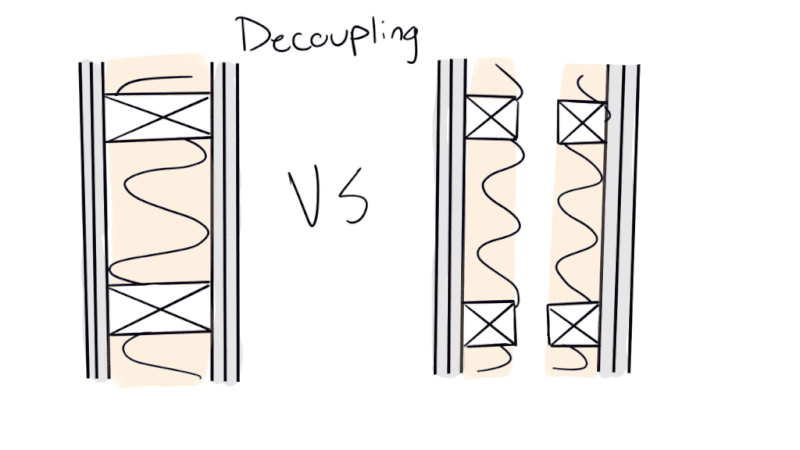Acoustic Decoupling
Enhancing Sound Insulation: The Impact of Decoupling Walls.
When it comes to ensuring optimal sound insulation in construction projects, decoupling walls can make a substantial difference. Let’s delve into the significant impact of decoupling techniques on sound insulation.
Consider the traditional gypsum wall with wooden studs. In this setup, the gypsum plates are directly attached to the wooden studs, allowing acoustic energy to travel through the studs, potentially compromising the desired sound insulation. Now, consider a gypsum wall with separated (decoupled) studs. This configuration effectively reduces the amount of acoustic energy that can be transferred from the gypsum plates and through the wooden studs, resulting in a potentially significantly improved sound insulation performance.
Decoupling the studs interrupts the direct pathway for sound transmission, minimizing the unwanted transfer of noise. This technique can be a game-changer in various environments, such as residential spaces or office setups.
Integrating decoupling methods into construction projects can greatly enhance the acoustic performance of spaces, creating a more peaceful and productive environment.

Decoupling walls by separating the studs, so that minimal effect from the ‘sound bridges’.
Slab separation and decoupling
Let’s quickly delve a little deeper into good practices when designing for sufficient sound insulation and low impact noise.
Consider a decoupled light wall frame separated with double studs and the floor separated from the slab with soft pads that reduce impact noise (also kept away from the wall). The separation is done to ensure a low chance of flanking transmission throughout the light construction.
Always try to keep an eye out for potential flanking paths, or when in doubt, seek advice from consultants.

For light structures, separating the slab and the double walls can make the difference between good and poor sound insulation.